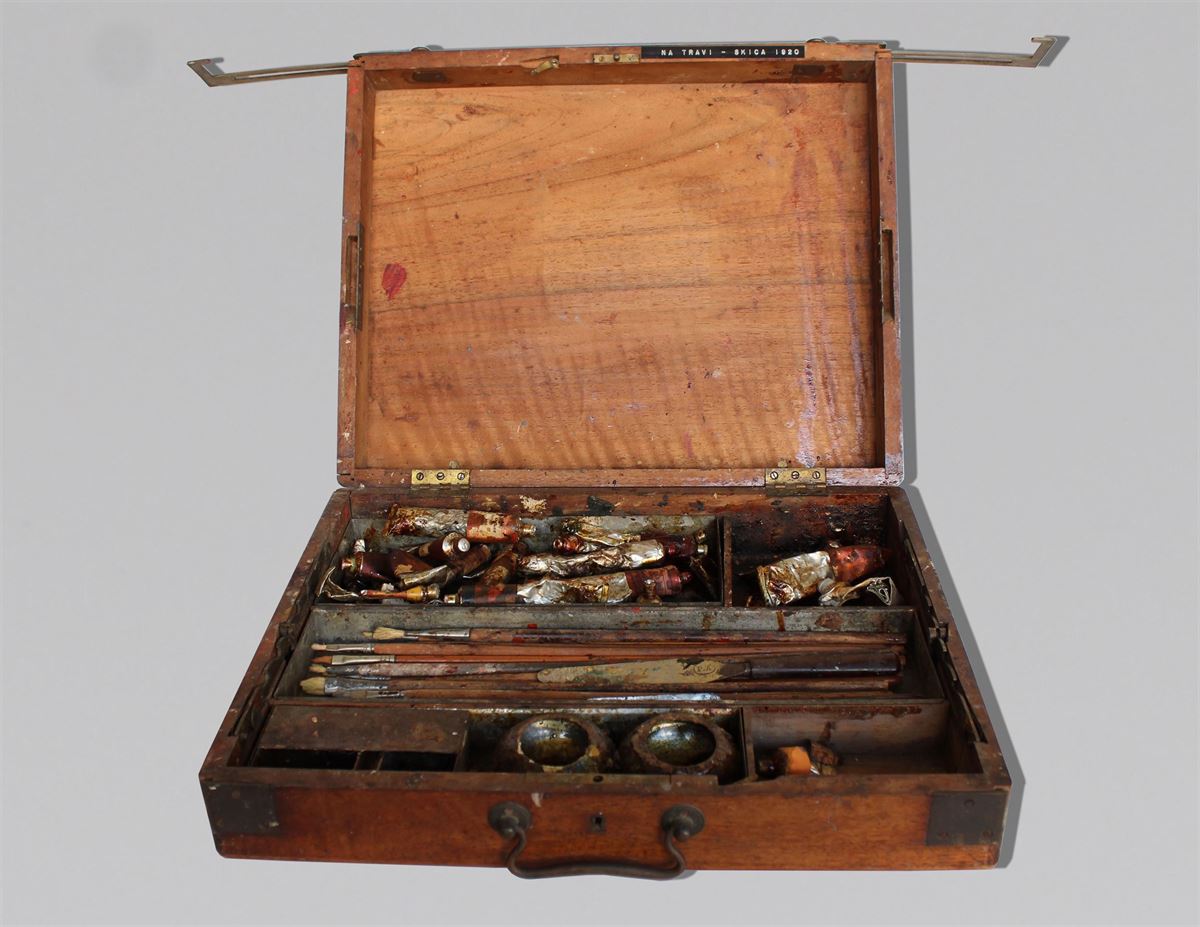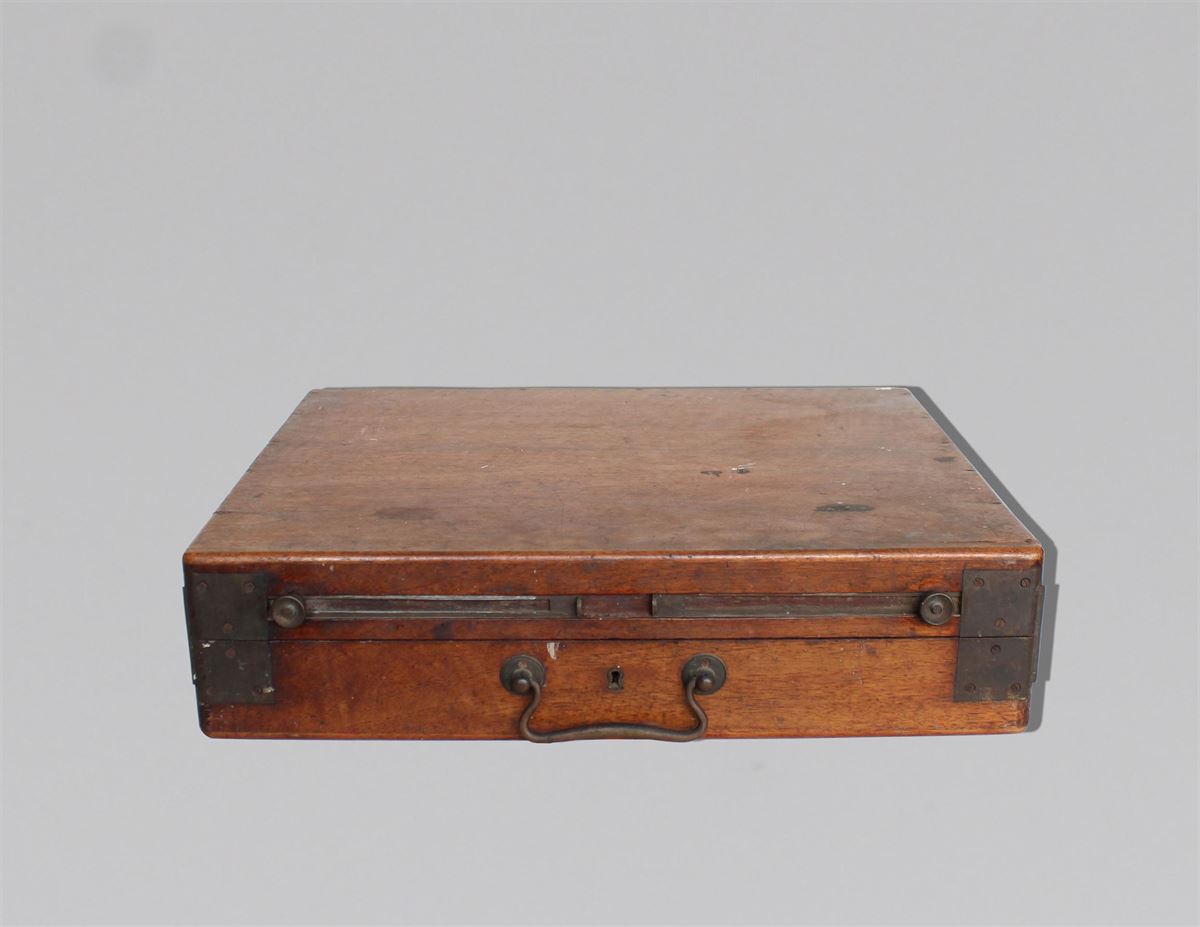središnji sadržaj
A wooden box in the shape of a suitcase with a metal handle, lock, and a metal mechanism for opening the suitcase. The interior is divided into five separate compartments. In three compartments, there are three tin boxes, and within one of them, there is a smaller tin box with two compartments. The wooden box is most likely from the late 19th century, and it bears the inscription On the Grass - Sketch 1920.
The box contains 20 aluminium tubes of oil paints from various manufacturers: C. Schmidt (identified by a rooster as a trademark), Giftin., Mussini, H. Schmincke & Co Dusseldorf, Dr. Schoenfeld & Co Dusseldorf, and G. B. Moewes Berlin. The pigments include raw sienna, creamy white (silver-white), light cobalt, green earth, Paris blue, ultramarine, Veronese green, light ochre, and burnt umber. Since the tubes have been used, on some, it is not possible to clearly read the manufacturer’s name.
Also, in the box, there is a metal double paint-mixing container. It has a holder at the bottom that attaches to the palette. The number 9 is stamped on it. The dimensions are as follows: width 12.5 cm, height 3.5 cm, and depth 6 cm.
The box also contains charcoal (six pieces), an eraser, two painting spatulas (1. length - 19 cm, width - 1.5 cm; 2. length - 20.5 cm, width - 2 cm), 11 brushes (ranging from 29.6 cm to 32 cm) without markings, two Dr. Schoenfeld brushes (33 cm), and three L. Cisar. Praguri brushes (33 cm).
One larger compartment in the wooden box contains the corresponding metal box with brushes, specifically, two pieces from G. Roweny & Co N6 (32 cm and 33 cm). The company G. Roweny & Co was established in 1783. Brothers Thomas and Richard began as perfume manufacturers and suppliers of wigs in London, but soon shifted to supplying materials for artists. They divided the business, with Thomas taking charge of the artistic material side, and they focused on the production of paints and other art supplies. In 1837, the company was taken over by Thomas’s son George, and it became known as G. Roweny & Co.



